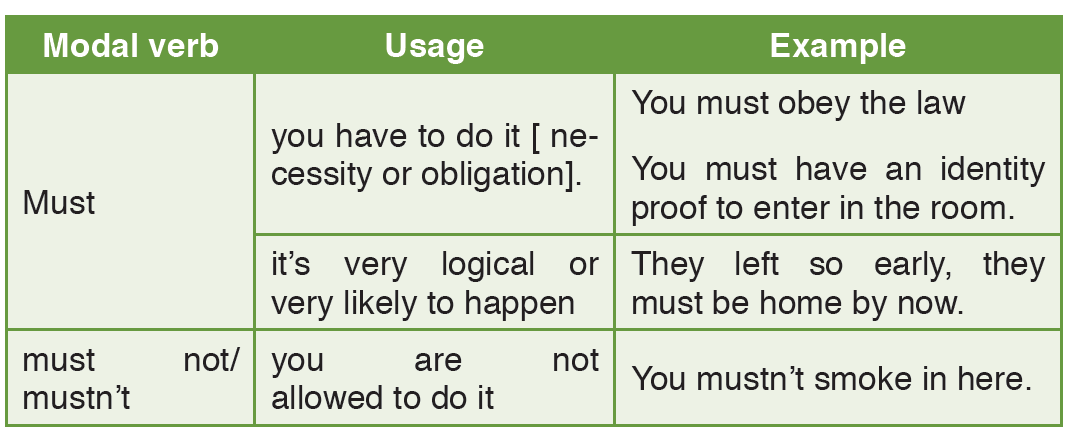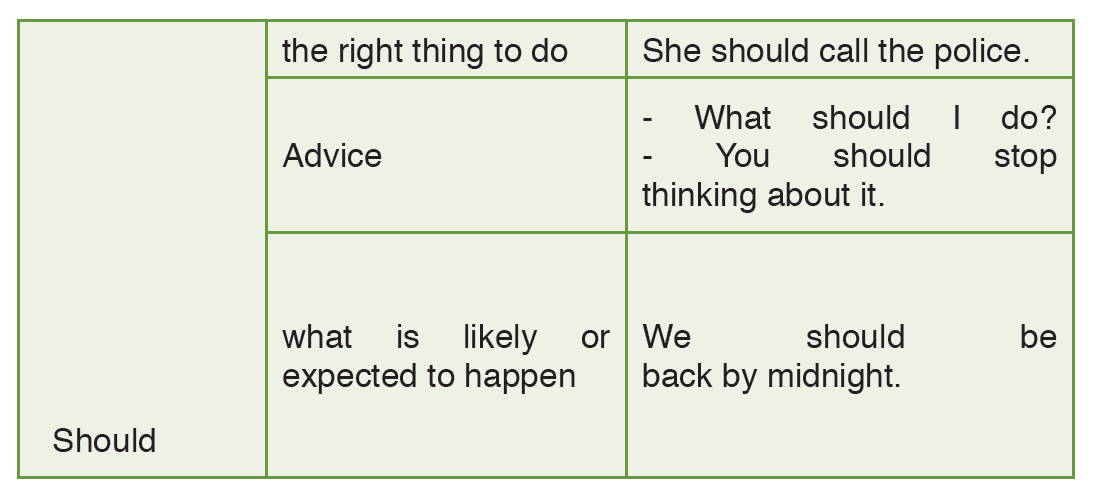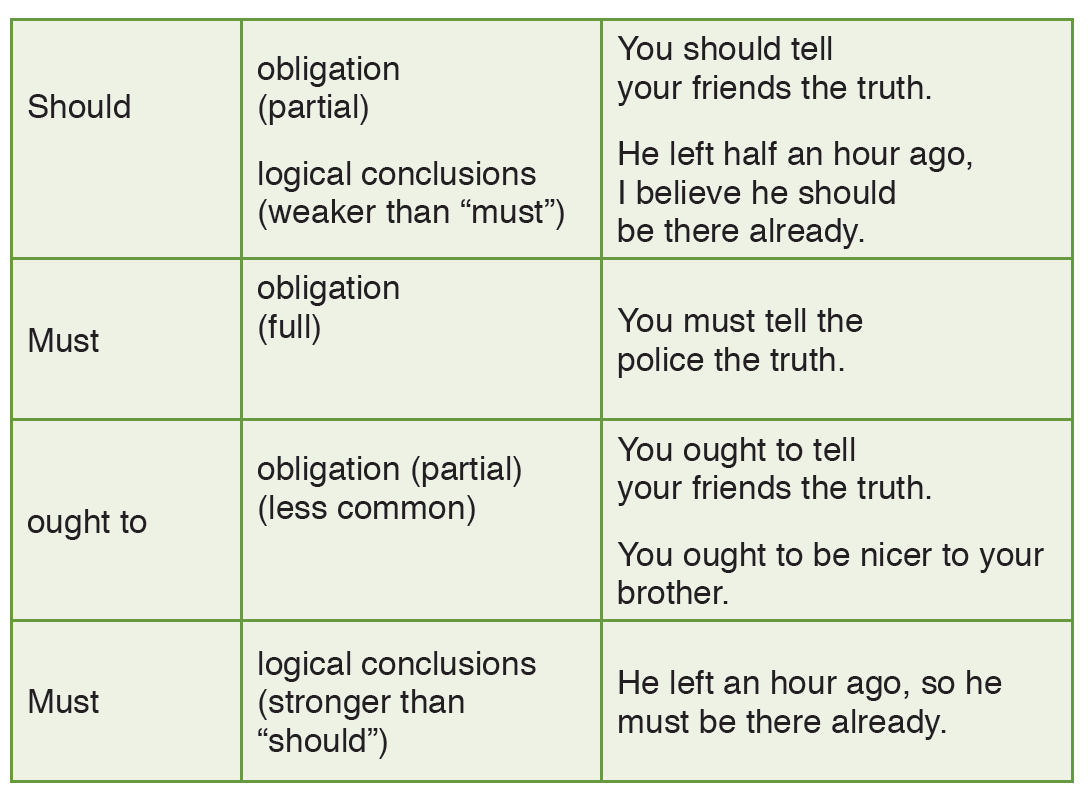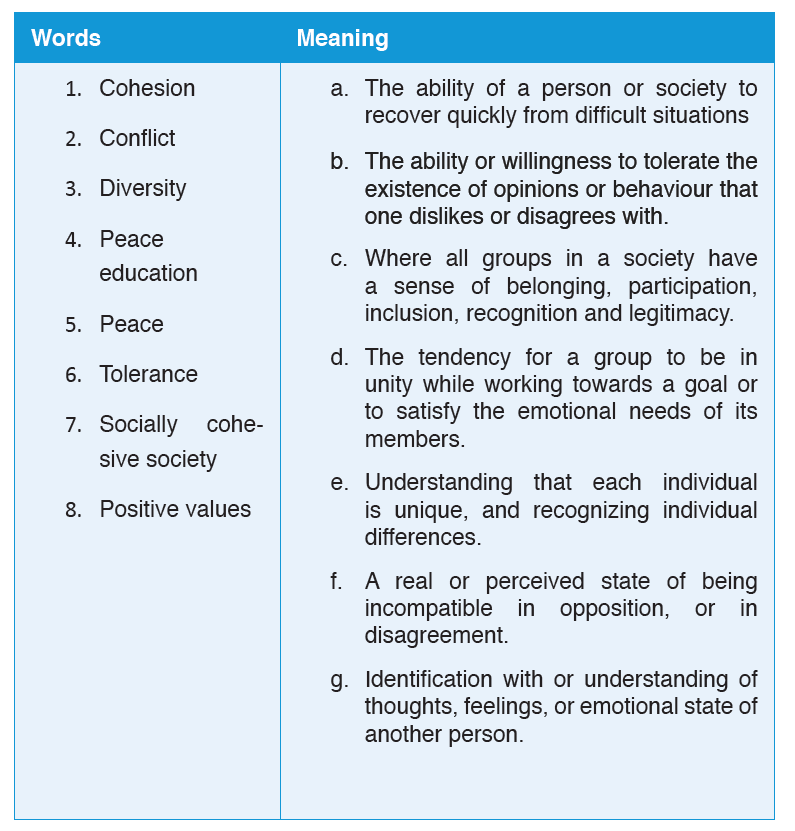UNIT 3: SOCIAL COHESION
Key unit competence
To use language in the context of social cohesion
Introductory Activity Picture observation and interpretation
Observe the following pictures and discuss

In your discussion, include answers to the following questions:
1. What is happening in the above pictures?
2. What can make people to work together as shown in those pictures?
3. What do we call the harmony and good relationship among members of a group in society?
3.1. Talking about personal values
3.1. 1. Learning activity: Reading and text analysis
• Text: The story of David and Doreen
Read the case study below then answer the questions that follow:
David was married to Doreen who came from a neighboring clan. They lived
together happily. One day, they had a quarrel and David physically assaulted
Doreen. Doreen was very sad and she packed her belongings and went
back to her parents. When her parents heard the matter, they went to the
clan elders to report the whole issue. The clan elders decided that no one
from the clan should interact with members of David’s clan till they asked for
forgiveness. David never involved his clan and therefore no one went to the
elders of Doreen’s clan to ask for forgiveness. Today, the two clans live as enemies.
• Comprehension questions
1. Analyse the problem in this case study. Show who or what contributed to each aspect of the problem.
2. What values did David not have that made him beat up his wife?
3. What values did Doreen not have that made her run away from her husband?
4. What should David’s family or clan have done to show active bystandership?
5. Suggest possible strategies that can be put in place to restore social cohesion between the two clans.
6. Suggest appropriate behaviour among couples that can promote healthy inter clan marriages that lead to social cohesion between clans.
3.1.2. Application activity: Writing a speech
Using information from the case study above, write a speech encouraging
people in your community to use peaceful means while solving problems
and discouraging negative behaviour.
a. Give your speech a title.
b. In your introduction, say what you are going to tell the audience.
c. In the body, tell them what you prepared to tell them.
d. In your conclusion, tell them a summary of what you told them in the body.
e. Read the comprehension and pick out important ideas to use in your speech.
f. Give a colleague to read through and correct for you before submitting.
3.2.1. Learning activity: Reading and text analysis
• Text: The root of social well being
Read carefully the following text and answer questions
Promoting social cohesion is one of the most difficult, yet one of the most important, challenges facing South Africa. However, while there is a widespread agreement that social cohesion influences economic and social development, and that nurturing a more cohesive society is an important policy goal in itself, little progress has been made in trying to measure it and track progress in this domain over time. One of the most severe limitations to this progress is the lack of definitional consensus on social cohesion. It may seem intuitive to describe it as the glue that binds us together, or the forging of a common sense of identity and belonging.
To others, it may speak to a willingness to extend trust to outsiders, to respect fellow citizens and uphold their dignity, and to be moved to action in the face of persistent inequality on behalf of those who are marginalised.
Alternatively, specifically in the South African context, it’s very essence may be seen as common humanity embodied in the notion of ubuntu.
The foundations of contemporary social cohesion theory and practice are often located within the early work of a number of 19th century sociologists.
In “The Division of Labour in Society” (1893), Émile Durkheim characterised social cohesion as an element of the quality of life in all societies (Dragolov etal, 2013a, p.12). Durkheim focused on two main dimensions of social cohesion: solidarity, and shared loyalty between people. Together, these elements created the foundations for social order and established bonds and inter-dependence between individuals (Manole, 2012, p. 128).
This has often been in response to divisions and cleavages within societies, related to factors including economic downturn, tensions associated with migration, and ethnic or cultural conflict. In analysing the extent of social cohesion in Canada, for example, Jenson’s (1998, p. 1) point of departure was evidence of a “fraying social fabric”, “mounting differences” between
people of different socioeconomic groups and worrying instances of “cultural insecurity and nostalgia for ‘Old Canada’ [which] are reducing tolerance and compassion” (Ekos Research Associates Inc., 1995, 17, in Jenson, 1998, p.1).
In this respect then, the recent focus on social cohesion by South African policy makers is unsurprising, given a context of widening inequality, growing unemployment, and persistent racial inequalities. Few would contest that in many ways, South Africa remains a deeply divided society.
It thus perhaps comes as little surprise that, particularly given the declining focus on reconciliation within the national policy agenda, the South African government has increasingly focused on measures to deepen social cohesion through a range of different interventions and initiatives. There are a variety of reasons for this increased interest by governance institutions
and policymakers in social cohesion. The literature proposes a number of positive potential advantages for highly cohesive societies, including: More stable democracies and greater civic participation (Cuellar, 2009, p. 3; Dhéret, 2015, pp. 1;3; Beauvais & Jenson, 2002); Greater productivity and growth, and resistance to the consequences of economic shocks (Easterly, Ritzan & Woolcock, 2009, pp. 10-11; Dhéret, 2015, pp. 1; 3; Beauvais & Jenson, 2002); Better quality of life for citizens, in that cohesive society is simply more liveable and sustainable for people (Pervaiz, Chaudhary & van Staveren, 2013, p. 5; Dragolov et al (b), p.8);
Greater inclusivity and tolerance of diversity and multiculturalism (Dhéret, 2015, pp. 1; 3); Stronger conflict management and resolution, particularly after crises such as radicalism, violence, protests or political divisions, and in fragile states. Better health outcomes, particularly related to the links between health and income inequality, employment and social support measures (Beauvais & Jenson, 2002, pp. 16- 17).
• Comprehension questions
1. What is the meaning of social cohesion according?
2. Which values did the writer talk about in the text?
3. Discuss different benefits and challenges as described in the text.
3.2.2. Application activities: Vocabulary and essay writing
1. Explain the following words as they are used in the text.
a. Conflict management
b. Inclusivity
c. Solidarity
d. Tolerance
e. Bonds
f. Glue
g. Compassion
2. Write a text using the words explained above.
3. Write a speech you would give during Itorero program in your school, sensitizing people about Values that link people together (social cohesion).
3.3. Elaborating on peace and unity
3.3. 1. Learning activity: Reading and text analysis
• Diagram: The Continuum of Benevolence
Study the diagram and answer questions that follow:
• Comprehension questions:
1. Identify different elements that can lead to peace and Unity.
2. Based on the above diagram, explain different values which were lacking in our society and finally led to genocide against Tutsi.
• Text: Dialogue between Rugamba and his Classmate Hope
Read the dialogue below and answer the questions that follow:
Hope: “What are you doing here, Rugamba? I haven’t seen you since June.”
Rugamba: “I’ve just come back from my holiday in Burera.”
Hope: “Did you enjoy it?”
Rugamba: “I love Burera. And the people there are friendly.”
Hope: “Did you attend Unity and peace training?”
Rugamba: Yes, I did. I can show you some pictures. We learnt a lot about social cohesion?”
Hope: That’s good! What were the training expectations?
Rugamba: The training expectations were mainly built on one statement that was stated as “Roles and responsibilities of youth to build and sustain a cohesive society.”
Hope: My dear, I wish I were there too.
Rugamba: Don’t worry Hope, Since I was trained and also given the training manual.
Hope: Did the organizers also plan something for those who did not attend?
Rugamba: Of course yes, you are going to be trained but mainly those from Peace and unity club.
Hope: Thank you Rugamba! Let’s join others in the dining room.
Rugamba: You are welcome hope! Enjoy your meal!
• Comprehension questions:
1. Where did Rugamba spend his holiday activities?
2. Give a reason why Rugamba said that he loves Burera.
3. What was the main purpose for the training attended by Rugamba?
4. What did the training organizers plan for other students as described in the dialogue?
5. Where did they go after conversation?
3.3.2. Application activities:
Role playing a dialogue and writing a report
1. Role play the pre-written role play above and discuss reasons for unity and peace clubs in Rwandan schools.
2. Your village has called a meeting to discuss about Rwandan values for peace building.
You are asked to take minutes as the secretary. Write the minutes and present them to the public.
• Notes:
a. The minutes should include:
b. The minutes have a title containing the date and place where the meeting was held.
c. Members who attended.
d. Agenda/ items to be discussed e.g. Previous minutes, speech from chairman, problems that may happen when there no values among people.
e. Body summarizing ideas for each item on the agenda.
f. Conclusion and time for the next meeting.
3. Vocabulary activity: Choose the right words to fill in gaps Love, Values, Cohesion, relationship, belonging, peace and unity,
conflict, responsibility , social cohesion, caring.
Social ----1--------balances individual rights against those of society and appreciates that a good ---2------------- enables people to respect each other’s------3-------. Therefore, it works towards the wellbeing of all its members. For example, it fights exclusions and marginalization and creates a sense of-------4--------. It also offers members of the group or society the opportunity for upward mobility. This promotes and--------5------- results in both individual and national development.
We often demonstrate positive values in different ways. For example, by solving problems that affect others, helping those in need, having a sense of -----------in what we do, being honest or even being caring to others. All these positive values contribute to ---------------. Finally, sensitize people to---------------one another.
3.4. Language structure: Some forms of the verb
A. Active and passive voice
• Preparatory activities
1. Justify the statement below using examples.
“In academic writing, People show interest in the person or object that experiences
an action rather than the person or object that performs the action.
In other words, the most important thing or person becomes the subject of tthe sentence.”
2. Study the following tables and answer the questions that follow
1. Identify the rules used to change active sentences into passive voices.
2. Why should we use the forms identified in the second column?
• Notes
I. “By” is used in the passive voice when it is necessary to know who does the action.
Example: “Love addicted” was sung by Vamps.
II. Passive voice is used if it does not need to know the perpetrator work.
Example: the streets are cleaned every day.
III. Passive voice is used if we do not know or forget who the perpetrator work.
Example: The police was murdered.
IV. Passive voice is used if we are more interested in the job than the actors who work.
Example: A new departmental store is being built.
• Rules
1. The places of subject and object are interchanged i.e. the object shifts to the place of subject and subject shifts to the place of object in passive voice.
Example:
Active voice: I write a letter.
Passive voice: A letter is written by me.
• Subject (I) of sentence shifted to the place of object (letter) and
object (letter) shifted to the place of subject (I) in passive voice.
2. Sometimes the subject of a sentence is omitted in passive voice, that is if
without its subject the sentence still has meaning.
Example: The traders sell clothes in yards.
Passive voice: The clothes are sold in yards.
3. 3rd form of verb (past participle) is always used as main verb in sentences
of passive voice for all tenses.
eg. A song is sung.
• The word “by” is used before the subject in sentences in passive
voice, to introduce the subject.
Example:
Active voice: He sings a song.
Passive voice: A song is sung by him.
4. The word “by” in passive voice, can be replaced sometimes by words
such as “with, to,’ etc.
Examples:
Active voice: The water fills the tub.
Passive voice: The tub is filled with water.
Active voice: He knows me.
Passive voice: I am known to him.
B. Imperative Sentences
• Definition of imperative sentence
A sentence that expresses either a command, a request, an advice, an
entreaty or desire is called imperative sentence.
• Characteristics of Imperative Sentences
1. The object “you” is generally missing in Imperative Sentences. The
structure of such sentences in Passive Voice is: Let + object + be/ not be + V3
2. In sentences which express request, advice and order, such phrases
as, you are requested to/advised to /ordered to, are used.
3. Word kindly/please is dropped.
C. Modal verbs: must, should
• Preparatory activities
1. Describe some modals verbs that may be used with obligation or
something that a person has to do and when providing pieces of advice.
2. Fill in the blanks using should, must and shouldn’t.
a. I feel sad and lonely. You see a doctor.
b. I have no money. You work harder.
c. All schools in Rwanda create peace and unity clubs.
d. We do our homework because it’s important.
e. Jason has missed the train He be late next time.
f. In England all children wear uniforms at school.
g. Parents or guardians teach their children Rwandan values.
• Notes



3. 6. Unit summary
This unit discusses social cohesion. The content includes: talking about
personal values that enhance social cohesion, Words and expressions
for social cohesion, elaborating on peace and unity, Modal verbs: should,
must, can, may, Active& Passive voice, vocabulary and sentence formation
activities. You could have seen that social cohesion exist in your community.
This lesson intends to help you understand the role of social cohesion in the
people’s well-being and equip you with the language and skills to do that.
More about this topic is found in general studies and communication skills at
advanced level for other options apart from Teacher training colleges.
3.7. End unit assessment
1. In about 250 words, write a speech you would give to fellow student teachers of Year one about their responsibilities to build a cohesive society.
2. Match the words in the table below with their meanings


